- Tips and Tricks for Successful Transplanting
- Choosing the Right Pot and Soil Mix
- Pot Size:
- Material:
- Drainage:
- Soil Mix:
- Fertilizer:
- Transplanting Process:
- Preparing the Begonia for Transplanting
- 1. Choose the Right Time
- 2. Select a Suitable Container
- 3. Prepare the Soil
- 4. Carefully Remove the Begonia from its Current Container
- 5. Inspect the Roots and Remove any Diseased or Rotting Portions
- 6. Place the Begonia in the New Container and Fill with Soil
- 7. Water the Begonia
- 8. Place in an Ideal Location
- Transplanting the Begonia Safely
- Preparation
- Choosing the Right Pot
- Transplanting Process
- Aftercare
- Conclusion
- Importance of the First Feeding
- Nutrients for Growth
- Promotes Root Development
- Enhances Blooming
- Strengthens Plant Health
- Promotes Overall Growth and Vigor
- Recommended Feeding Times
- When and Why to Feed Everflowering Begonias
- When to Feed Everflowering Begonias
- Why Feed Everflowering Begonias
- Choosing the Right Fertilizer
- Choosing the Right Fertilizer
- 1. Nitrogen, Phosphorus, and Potassium (NPK) Ratio
- 2. Slow or Controlled-Release Fertilizer
- 3. Micronutrients
- 4. Water-Soluble or Granular Form
- 5. Organic or Synthetic
- Proper Feeding Techniques
- 1. Choose the right fertilizer
- 2. Follow the feeding schedule
- 3. Water before feeding
- 4. Apply fertilizer evenly
- 5. Supplement with organic matter
- 6. Monitor plant response
- 7. Flush out excess salts
- Questions and Answers:
- When is the best time to transplant everflowering begonia?
- What is the proper way to transplant everflowering begonia?
- How often should everflowering begonias be watered after transplanting?
- When should everflowering begonias be fertilized for the first time?
- What are some common problems or pests that can affect everflowering begonias?
- Videos: Begonia Propagation | How to Root Cuttings of Begonia and Grow them Through the Winter
Everflowering begonias are beautiful and delicate plants that add a touch of elegance to any garden. However, in order to ensure their health and longevity, it is important to understand the proper techniques for transplanting and feeding these plants.
Transplanting everflowering begonias is a delicate process. It is best to do it during the springtime when the plant is in its active growth phase. Before transplanting, make sure to choose a suitable container with drainage holes to allow excess water to escape. Start by gently removing the plant from its original container and carefully loosening the roots. Place the plant in the new container and fill it with a well-draining potting mix, making sure to leave some space at the top for watering.
Once the transplantation is complete, it is time to focus on the first feeding of the everflowering begonia. This step is crucial for providing the necessary nutrients to support the plant’s growth and encourage blooming. The best way to do this is by using a balanced liquid fertilizer specifically formulated for flowering plants. Follow the instructions on the fertilizer bottle to determine the proper dilution ratio. It is recommended to feed the plant once every two weeks during the growing season.
In conclusion, proper techniques for transplanting and feeding everflowering begonias are essential for maintaining their health and beauty. By following the steps outlined in this master class, you can ensure that your begonias thrive and flourish in your garden.
Tips and Tricks for Successful Transplanting
- Choose the Right Time: Transplant everflowering begonias during early spring or late summer, when temperatures are mild and plants are not actively blooming. This will minimize stress on the plants.
- Prepare the Soil: Before transplanting, prepare a well-draining soil mix that is rich in organic matter. This will provide a good foundation for the begonias to establish and grow.
- Water the Plants: Thoroughly water the plants a day or two before transplanting. This will help minimize stress on the roots during the transplant process.
- Choose the Right Location: Select a location that receives partial shade or filtered sunlight. Everflowering begonias prefer bright but indirect light. Avoid areas with strong, direct sunlight as it can scorch the leaves.
- Prepare the Transplant Hole: Dig a hole in the prepared soil mix that is slightly larger than the root ball of the begonia. Make sure the hole is deep enough to accommodate the roots without crowding or bending them.
- Handle with Care: When removing the begonia from its original container, be gentle and avoid damaging the roots. If the roots are tightly packed, loosen them slightly with your fingers before transplanting.
- Plant the Begonia: Place the begonia in the transplant hole and backfill with soil, firming it gently around the roots. Make sure not to bury the stem of the plant too deeply, as it can lead to rot. Leave a small depression around the base of the plant to hold water.
- Water and Mulch: After transplanting, water the begonia thoroughly and apply a layer of mulch around the plant to help conserve moisture and suppress weed growth. Avoid overwatering, as it can lead to root rot.
- Monitor and Protect: Regularly monitor the begonia for signs of stress or pests. Protect the plants from strong winds and extreme temperatures by providing natural or artificial shade if necessary.
- Feed and Fertilize: After a few weeks of transplanting, start feeding the begonias with a balanced soluble fertilizer. Follow the manufacturer’s instructions for application rates and frequency.
Choosing the Right Pot and Soil Mix
Choosing the right pot and soil mix is essential for the successful transplanting and growth of everflowering begonias. Here are some considerations to keep in mind:
Pot Size:
When selecting a pot for your everflowering begonia, choose one that is about 1-2 inches larger in diameter than the current pot. This will allow enough room for the roots to grow without being too crowded.
Material:
The material of the pot can also affect the growth of the plant. Plastic pots are lightweight, easy to clean, and retain moisture well. However, they may not provide enough insulation for the roots in colder climates. Terra cotta pots are porous and allow the soil to breathe, but they can dry out quickly, requiring more frequent watering.
Drainage:
Ensure that the pot you choose has good drainage holes at the bottom. This will prevent water from accumulating in the soil and causing root rot. Additionally, placing a layer of gravel or broken pottery at the bottom of the pot can further improve drainage.
Soil Mix:
The soil mix for everflowering begonias should be well-draining and rich in organic matter. A recommended mix is equal parts potting soil, perlite, and peat moss or coconut coir. This combination provides a balance of moisture retention and drainage, allowing the roots to thrive.
Fertilizer:
Before transplanting your everflowering begonia, it’s important to enrich the soil with a slow-release fertilizer or organic matter. This will provide the necessary nutrients for healthy growth and flowering.
Transplanting Process:
- Carefully remove the everflowering begonia from its current pot, being cautious not to damage the roots.
- Place a layer of the prepared soil mix at the bottom of the new pot.
- Position the begonia in the center of the pot and fill in the remaining space with the soil mix, gently pressing it down.
- Water the plant thoroughly, ensuring that the water drains out through the bottom holes.
- Place the potted begonia in a location with bright, indirect sunlight.
By choosing the right pot and soil mix, you can provide a favorable environment for your everflowering begonia to thrive and produce beautiful blooms.
Preparing the Begonia for Transplanting
Transplanting everflowering begonia can be a delicate process that requires careful preparation. By following the steps outlined below, you can ensure that your begonia plant is ready for its new home and will thrive in its new environment.
1. Choose the Right Time
Transplanting begonia is best done during the spring or early summer when the plant is actively growing. This will give it the best chance of adapting to its new surroundings and establishing new roots.
2. Select a Suitable Container
When choosing a new container for your begonia, make sure it is slightly larger than the current one to allow for root growth. Ensure that the container has drainage holes to prevent waterlogging, as begonias prefer well-draining soil.
3. Prepare the Soil
Begonias thrive in a well-draining soil mix. Prepare a mixture of equal parts of potting soil, perlite, and peat moss to create a loose and well-aerated soil. This will promote healthy root growth and prevent overwatering.
4. Carefully Remove the Begonia from its Current Container
Gently turn the existing container upside down and tap the bottom to loosen the root ball. Carefully lift the plant out of the container while supporting the base of the stem. Avoid pulling on the stem or leaves, as this can cause damage.
5. Inspect the Roots and Remove any Diseased or Rotting Portions
Once the begonia is out of its container, inspect the roots for any signs of disease or rot. Trim off any damaged or infected portions using clean and sharp scissors or pruners. This will help prevent the spread of pathogens to the new soil.
6. Place the Begonia in the New Container and Fill with Soil
Position the begonia in the center of the new container and fill it around the roots with the prepared soil mixture. Gently press the soil around the roots to secure the plant in place, making sure not to compact it too much.
7. Water the Begonia
Give the newly transplanted begonia a thorough watering to settle the soil and ensure that it is evenly moist. Avoid overwatering, as this can lead to root rot. Allow the top inch of soil to dry out before watering it again.
8. Place in an Ideal Location
Choose a location for your begonia that receives bright, indirect light. Avoid placing it in direct sunlight, as this can scorch the leaves. Maintain a temperature range between 60 and 70 degrees Fahrenheit (15-21 degrees Celsius) to provide optimal growing conditions.
By following these steps, you can successfully prepare your everflowering begonia for transplantation, ensuring its health and growth in its new container.
Transplanting the Begonia Safely
Transplanting everflowering begonias can be a delicate process, but with the right technique and care, you can ensure the health and vitality of your plants.
Preparation
Before transplanting your begonia, make sure you have the necessary tools and equipment ready. This includes a clean and sterilized pot, a well-draining soil mix, a trowel or small shovel, and water.
Choosing the Right Pot
The size of the pot is important when transplanting begonias. It should be slightly larger than the current pot or container, allowing room for the roots to grow. Too large of a pot can lead to overwatering and root rot.
Transplanting Process
- Start by gently loosening the soil around the begonia plant in its current pot. This will help ease the roots out without causing too much damage.
- Once the begonia is loose, carefully lift it out of the pot, gripping the base of the plant to avoid touching the delicate stems and leaves.
- Place the begonia in the new pot, ensuring that it sits at the same depth as it was in the previous pot.
- Add the well-draining soil mix around the roots, gently pressing it down to eliminate air pockets.
- Water the newly transplanted begonia thoroughly, allowing excess water to drain out from the bottom of the pot.
Aftercare
After transplanting, it is important to provide the begonia with proper care to promote its growth and establish healthy roots. This includes:
- Placing the begonia in a location with bright, indirect sunlight.
- Watering the begonia when the top inch of soil feels dry, being careful not to overwater.
- Applying a balanced fertilizer once a month during the growing season.
Conclusion
By following these steps and providing proper aftercare, you can safely transplant your everflowering begonia and ensure its successful growth and blooming. Remember to be gentle with the roots and avoid disturbing the delicate foliage, and you will enjoy a thriving begonia plant in no time.
Importance of the First Feeding
Nutrients for Growth
Feeding begonias is necessary to provide the essential nutrients that promote healthy growth and blooming. The first feeding is particularly important as it sets the foundation for the plant’s development.
Promotes Root Development
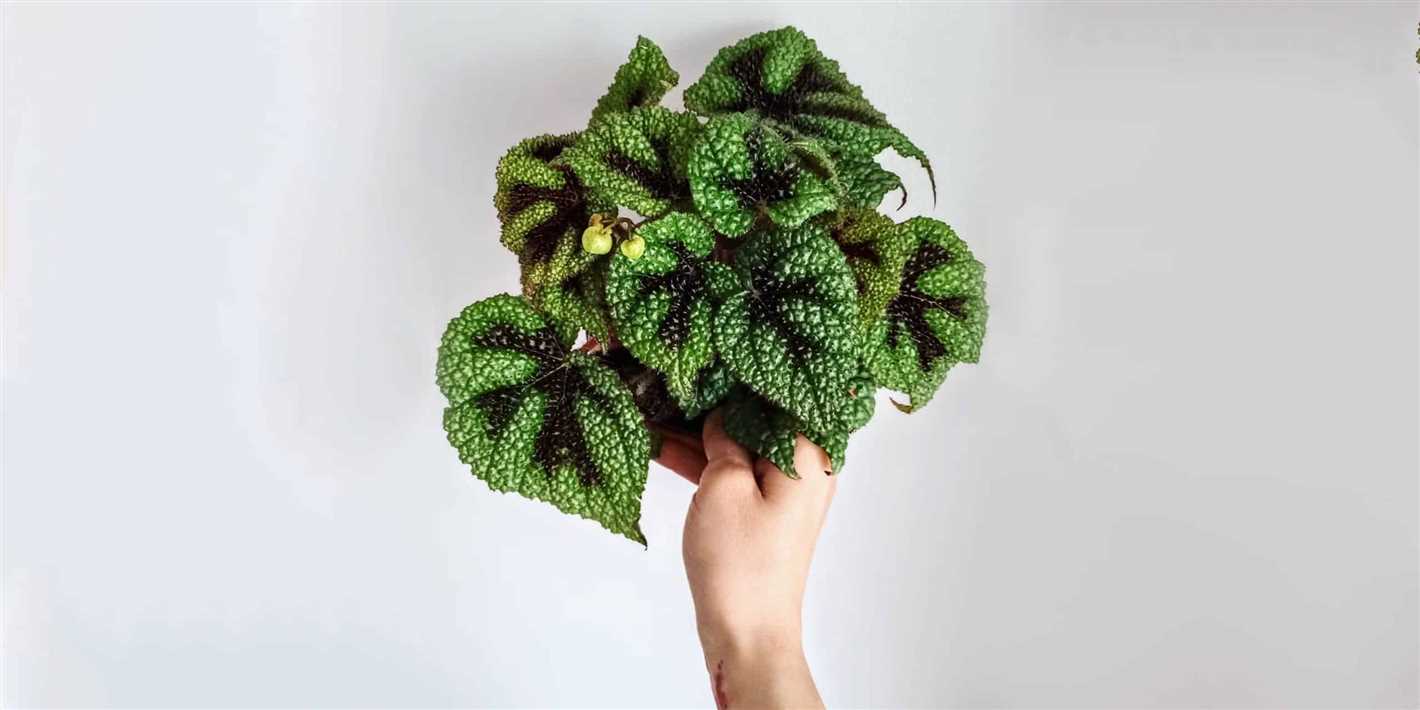
During the transplanting process, begonias may experience some degree of stress and shock. Providing the first feeding with the right nutrients can help stimulate root growth, ensuring the plant establishes a strong root system.
Enhances Blooming
The first feeding of everflowering begonias can significantly enhance the blooming process. By providing the necessary nutrients, the plant is better equipped to produce abundant flowers with vibrant colors.
Strengthens Plant Health
A well-fed begonia is generally more resistant to diseases and pests. The first feeding helps strengthen the overall health of the plant, making it more capable of withstanding environmental and biological stress factors.
Promotes Overall Growth and Vigor
By providing the right nutrients from the beginning, the first feeding ensures the overall growth and vigor of everflowering begonias. This means the plant will exhibit strong foliage, lush blooms, and a robust overall appearance.
Recommended Feeding Times
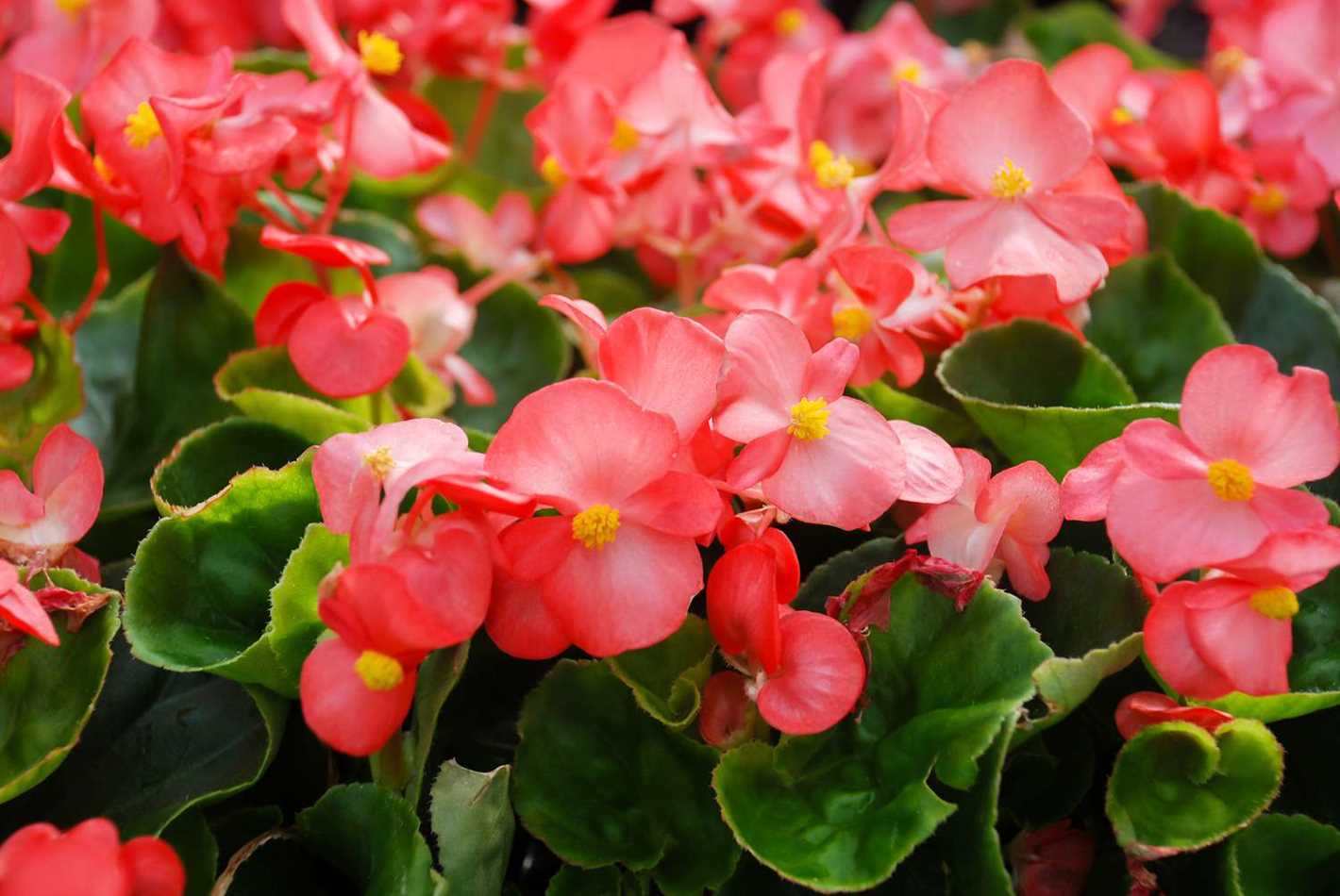
It is recommended to provide the first feeding approximately two weeks after transplanting everflowering begonias. This allows the plant to settle into its new environment and ensures it is ready to absorb and utilize the nutrients efficiently.
When and Why to Feed Everflowering Begonias
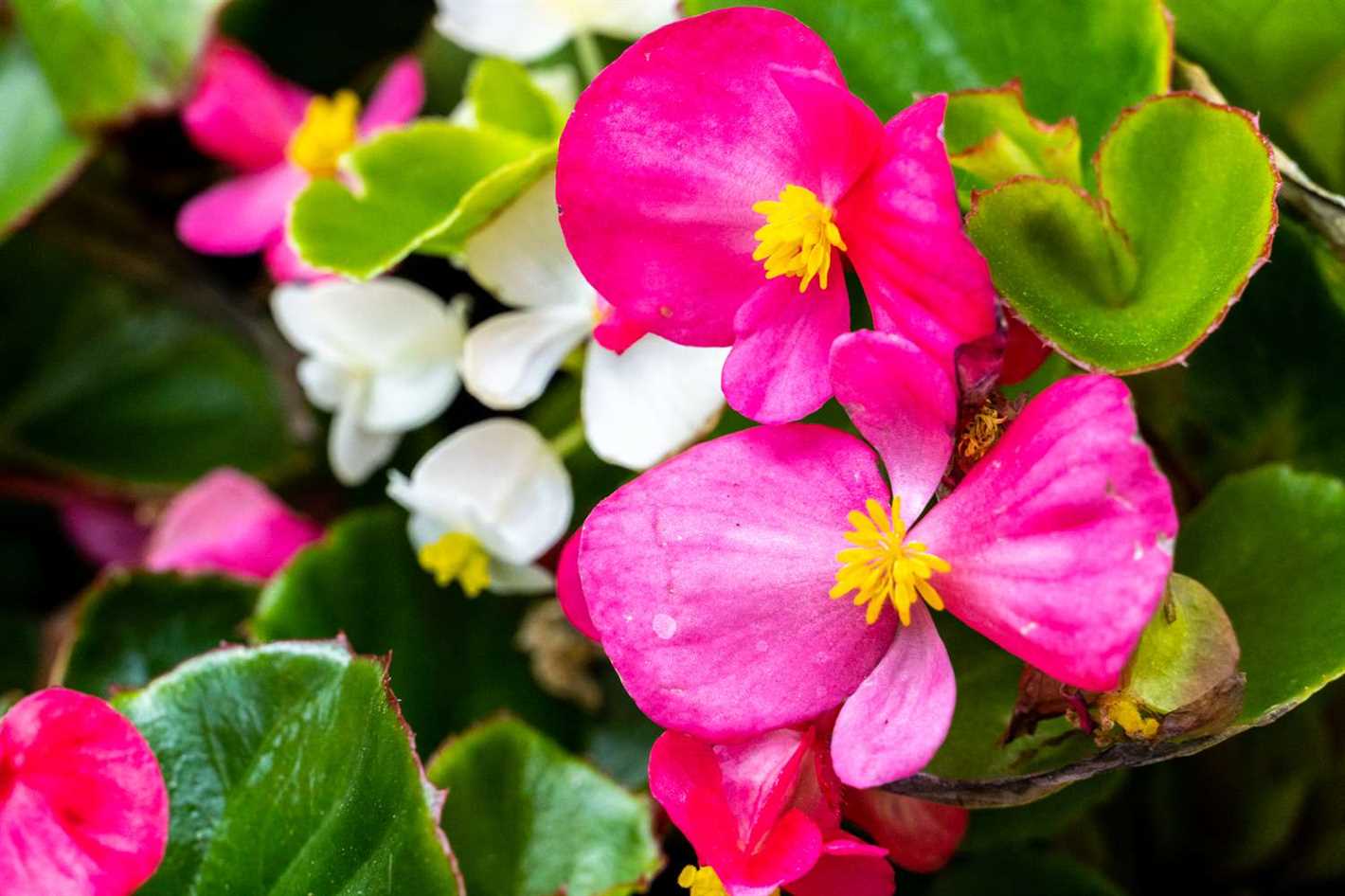
Feeding everflowering begonias is an essential part of their care routine. Providing proper nutrition is crucial for the plant’s growth, health, and ability to produce abundant and long-lasting blooms.
When to Feed Everflowering Begonias
It is recommended to start feeding everflowering begonias two to three weeks after transplanting or when the first signs of active growth appear. This usually occurs during the early spring or after the last frost. Additionally, feeding should continue throughout the growing season until the plant enters dormancy or ceases flowering in late fall.
When determining the frequency of feeding, it is important to follow the instructions on the fertilizer packaging. However, as a general guideline, feeding every two to four weeks during the growing season is typically sufficient.
Why Feed Everflowering Begonias
Feeding everflowering begonias is necessary to ensure they receive the essential nutrients for optimal growth and flowering. Fertilizers provide plants with a balanced ratio of macro and microelements, including nitrogen, phosphorus, and potassium, which are vital for their development. These nutrients support various plant functions, such as:
- Promoting growth: Nitrogen stimulates foliage and stem growth, allowing begonias to develop a lush and full appearance.
- Encouraging flowering: Phosphorus is essential for flower formation and blooming. It enhances the production of buds and helps begonias display vibrant and abundant blooms.
- Strengthening roots: Potassium supports root development, ensuring the plant can efficiently absorb water and nutrients from the soil.
In addition to macronutrients, fertilizers also provide micronutrients like iron, manganese, and zinc. These trace elements play a vital role in various physiological processes and help prevent nutrient deficiencies that may lead to stunted growth or poor flowering.
Choosing the Right Fertilizer
When selecting a fertilizer for everflowering begonias, opt for a balanced formula specifically designed for flowering plants. Look for a product with an NPK ratio (nitrogen, phosphorus, potassium) of around 10-10-10 or 20-20-20. This ensures a sufficient supply of nutrients without risking excessive growth or flower abortion.
It is also advisable to choose a slow-release fertilizer or granular formula, as this provides a steady and continuous nutrient release over time. This reduces the risk of over-fertilizing and helps maintain a balanced nutrient supply for the plants.
Remember to always follow the instructions on the fertilizer packaging and adjust the application rates based on the specific needs of your everflowering begonias. With the right feeding routine, you can enjoy healthy, vigorous plants with a profusion of beautiful blooms.
Choosing the Right Fertilizer
When it comes to fertilizing everflowering begonias, choosing the right fertilizer is crucial for their healthy growth and abundant blooms. There are several factors to consider when selecting a fertilizer for these plants:
1. Nitrogen, Phosphorus, and Potassium (NPK) Ratio
The NPK ratio represents the proportion of nitrogen (N), phosphorus (P), and potassium (K) in the fertilizer. For everflowering begonias, a balanced NPK ratio is recommended, such as 10-10-10 or 20-20-20. This ensures an even supply of essential nutrients for foliage growth, root development, and flower production.
2. Slow or Controlled-Release Fertilizer
Using slow or controlled-release fertilizers can be advantageous for everflowering begonias. These types of fertilizers provide a continuous and controlled release of nutrients over an extended period, reducing the risk of nutrient imbalances or leaching. Look for fertilizers labeled as slow-release or extended-release.
3. Micronutrients
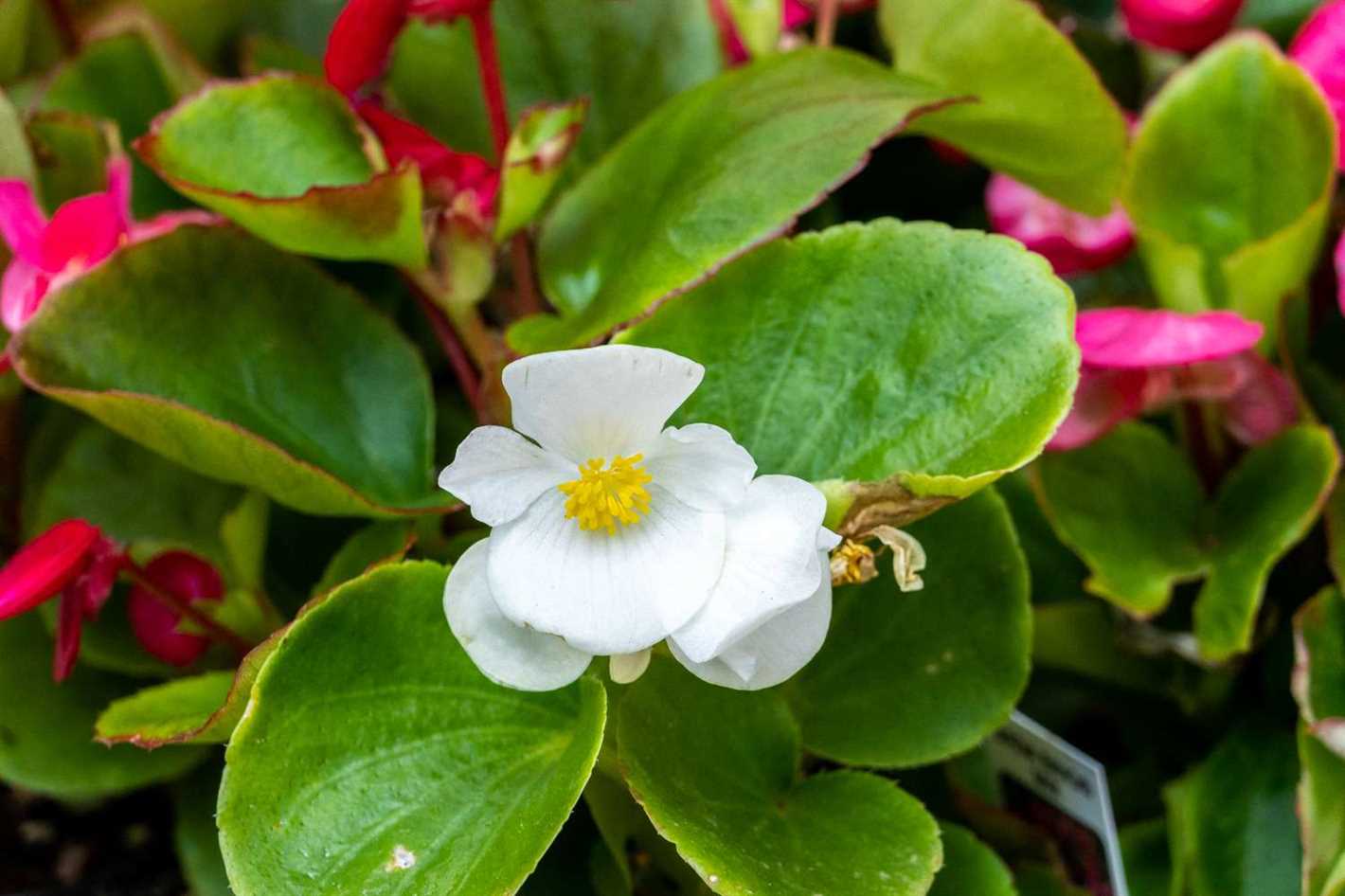
In addition to the primary NPK nutrients, everflowering begonias also require micronutrients for optimal growth. These include iron, manganese, zinc, copper, and boron. Ensure that the chosen fertilizer contains a balanced blend of essential micronutrients or consider supplementing with a separate micronutrient product.
4. Water-Soluble or Granular Form
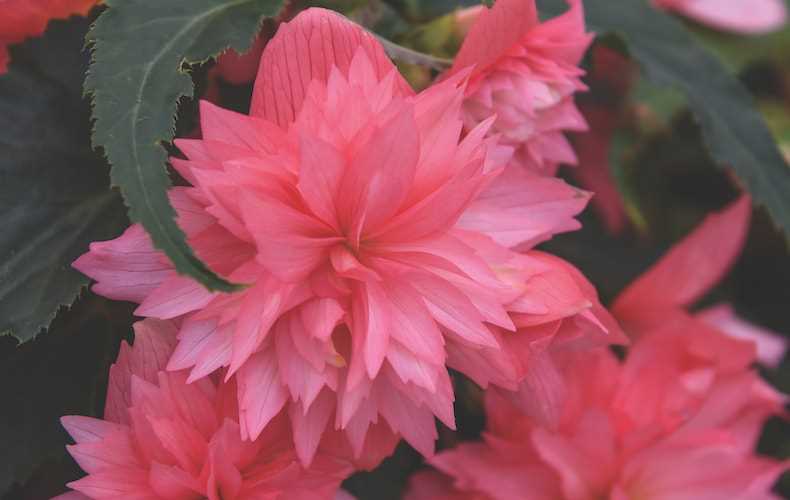
Fertilizers for everflowering begonias are available in both water-soluble and granular forms. Water-soluble fertilizers provide quick and immediate nutrient availability but require frequent application. Granular fertilizers, on the other hand, release nutrients slowly and provide longer-lasting effects. Choose the form that best suits your preferences and schedule for fertilizing.
5. Organic or Synthetic
Another consideration when choosing a fertilizer is whether to opt for organic or synthetic options. Organic fertilizers are derived from natural sources and may provide a more balanced and sustainable approach to feeding everflowering begonias. Synthetic fertilizers, on the other hand, offer precise nutrient formulations but may have a higher risk of salt buildup in the soil if not used properly.
In conclusion, selecting the right fertilizer for everflowering begonias requires careful consideration of the NPK ratio, slow-release properties, micronutrient content, form (water-soluble or granular), and the choice between organic or synthetic options. By meeting the nutritional needs of these plants, you can ensure their healthy growth, vibrant blooms, and overall success in the garden.
Proper Feeding Techniques
Feeding everflowering begonias is an essential part of their care routine. Proper feeding techniques can ensure the healthy growth and abundant blooming of these beautiful plants.
1. Choose the right fertilizer
When it comes to feeding everflowering begonias, it is important to choose the right fertilizer. Look for a balanced, water-soluble fertilizer specifically formulated for flowering plants. A fertilizer with a ratio of 10-10-10 or similar would be suitable. Avoid fertilizers high in nitrogen, as they can promote lush foliage growth at the expense of flowers.
2. Follow the feeding schedule
Establish a feeding schedule for your everflowering begonias. During the active growing season, feed the plants every two weeks. As the plants enter the dormant period, reduce the frequency to once a month. Be sure to follow the manufacturer’s instructions for the specific fertilizer you are using regarding dilution rates and application methods.
3. Water before feeding
Before applying fertilizer, make sure to water the everflowering begonias thoroughly. This helps prevent the roots from being burned by concentrated nutrients. Proper moisture levels also ensure better nutrient uptake by the plants.
4. Apply fertilizer evenly
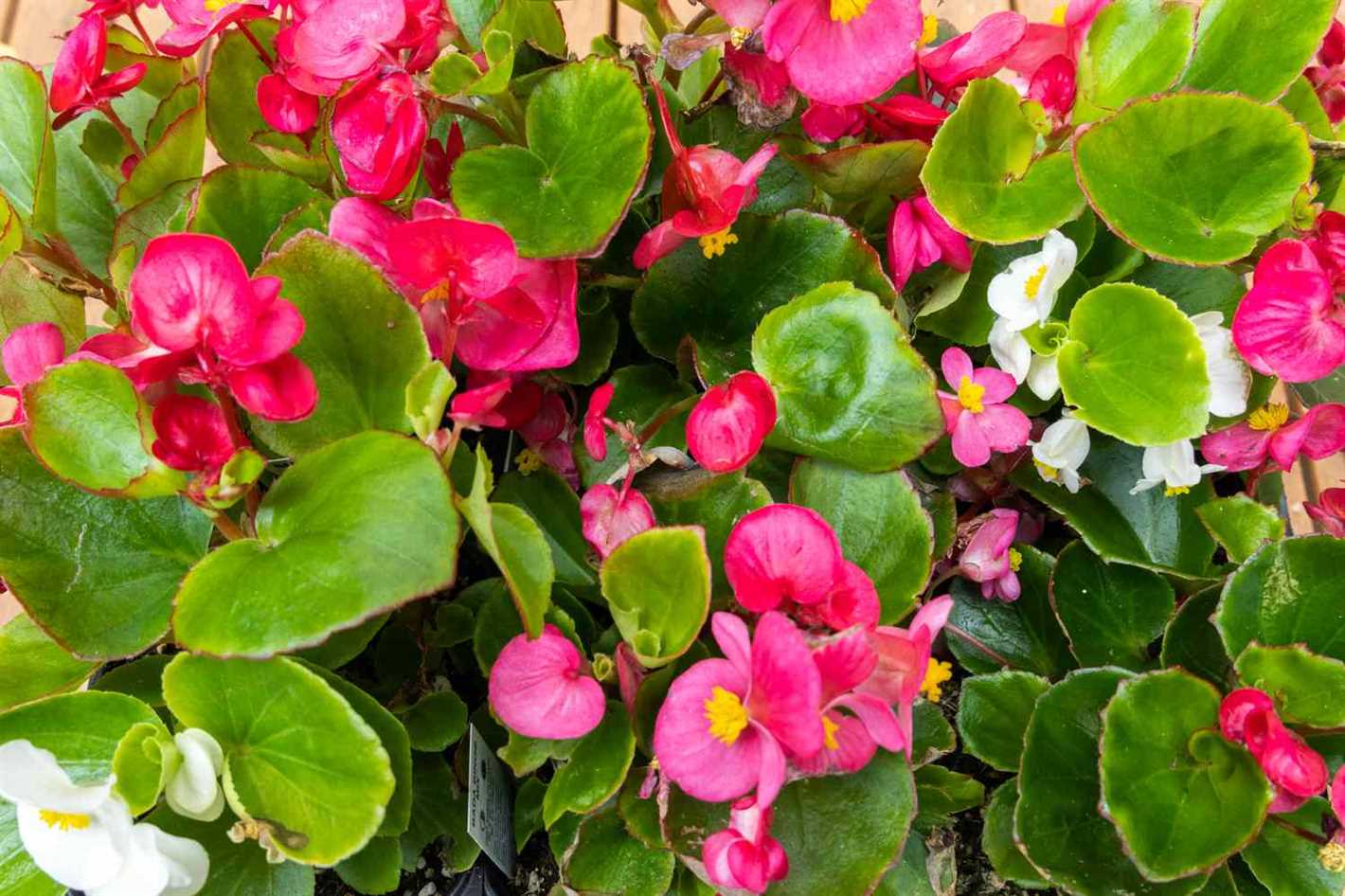
Evenly distribute the fertilizer around the base of the plants, being careful not to pour it directly onto the leaves or flowers. Applying the fertilizer too close to the foliage can cause burning. Follow the recommended dosage to avoid over-fertilizing, as this can lead to nutrient imbalance and damage the plants.
5. Supplement with organic matter
In addition to regular fertilizer, supplement the everflowering begonias with organic matter. This can include compost, well-rotted manure, or organic plant food. Organic matter enriches the soil, improves its structure, and provides a slow release of nutrients over time.
6. Monitor plant response
Keep an eye on your everflowering begonias’ response to the feeding regime. If the plants show signs of nutrient deficiency or excess, such as yellowing leaves or stunted growth, adjust the feeding accordingly. Some begonias may require more frequent or lighter feedings, depending on their individual needs.
7. Flush out excess salts
To prevent the buildup of excess salts in the soil, periodically flush out the soil by watering the everflowering begonias with plenty of fresh water. This helps remove any accumulated salts from the fertilizers and keeps the soil pH at optimal levels for nutrient uptake.
By following these proper feeding techniques, you can ensure the health and vibrancy of your everflowering begonias, enjoying their beautiful blooms for a long time to come.
Questions and Answers:
When is the best time to transplant everflowering begonia?
The best time to transplant everflowering begonias is in the spring, after the last frost has passed. This allows the plant to establish roots in the new location before the hot summer weather arrives.
What is the proper way to transplant everflowering begonia?
To transplant everflowering begonias, start by choosing a location with well-drained soil and partial shade. Dig a hole slightly larger than the root ball of the plant and gently remove the begonia from its current pot. Place the root ball into the hole and backfill with soil, patting it down gently. Water the plant thoroughly after transplanting.
How often should everflowering begonias be watered after transplanting?
After transplanting, everflowering begonias should be watered regularly to keep the soil evenly moist. Watering once or twice a week should be sufficient. However, it’s important not to overwater, as this can lead to root rot.
When should everflowering begonias be fertilized for the first time?
Everflowering begonias can be fertilized for the first time about a month after transplanting. Use a balanced, water-soluble fertilizer and follow the instructions on the package for the correct dosage. Fertilizing once a month throughout the growing season will help promote healthy growth and abundant flowers.
What are some common problems or pests that can affect everflowering begonias?
Some common problems or pests that can affect everflowering begonias include powdery mildew, aphids, and root rot. Powdery mildew can be treated with a fungicide, while aphids can be controlled with insecticidal soap or horticultural oil. To prevent root rot, make sure the plant is not overwatered and is planted in well-drained soil.







